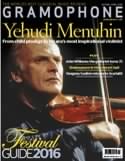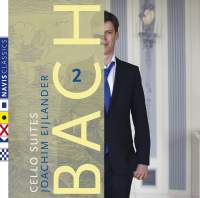Texte paru dans: / Appeared in: |
|
|
Outil de traduction (Très approximatif) |
|
|
Reviewer:
Caroline Gill
Joachim Eijlander’s first volume of Bach’s Cello Suites (9/15) was a meticulous albeit slightly bland reading which bore all the hallmarks of the start of a dependable if uncontroversial set. That the second shows less of that precision, with no compensating greater overall musical interest, is a disappointment. There is similarly close miking here, although the intimacy is forced a little more than last time by the slapping of fingers on fingerboard that was more sparingly present and used to more subtle effect in the first volume. There is also very little variation in character between each suite. As a result Eijlander misses a lot of the inherent wit in Bach’s writing, without which these works can – and do – become a relentless wall of sound. This is particularly notable in the Courante of the C minor Fifth Suite, where his echoing of phrases is so foursquare as to make them sound as if they were totally unrelated; it’s all strangely humourless as a result.
Interestingly, the Sixth Suite is the least anodyne of the three here. Eijlander doesn’t use a piccolo cello and as a result the momentum of the phrasing feels more substantial than it does in performances made light by the very particular personality of the five-string instrument for which Bach wrote the suite. At the start of the Prelude there is real promise that the slightly slower-than-expected speed and weight of sound will yield something truly joyful, but sadly that beauty is hampered by the slightly sour tuning (a fault present throughout the movement, as well as surprisingly frequently elsewhere), two-dimensional phrasing and occasionally unusual grouping of semiquavers that confusingly undermines their sense.
Unlike the second volume of Ditta Rohmann’s precise and understated recording (Hungaroton, 11/14) – whose aesthetic, on the basis of his first volume, was what Eijlander was going for – there is no sense of a completion here but instead one of a mismatch. The character and rough-hewn finish of this final volume is hard to relate to the finesse of the first. |
|
|
|
|
|
Cliquez l'un ou l'autre
bouton pour découvrir bien d'autres critiques de CD |
|




